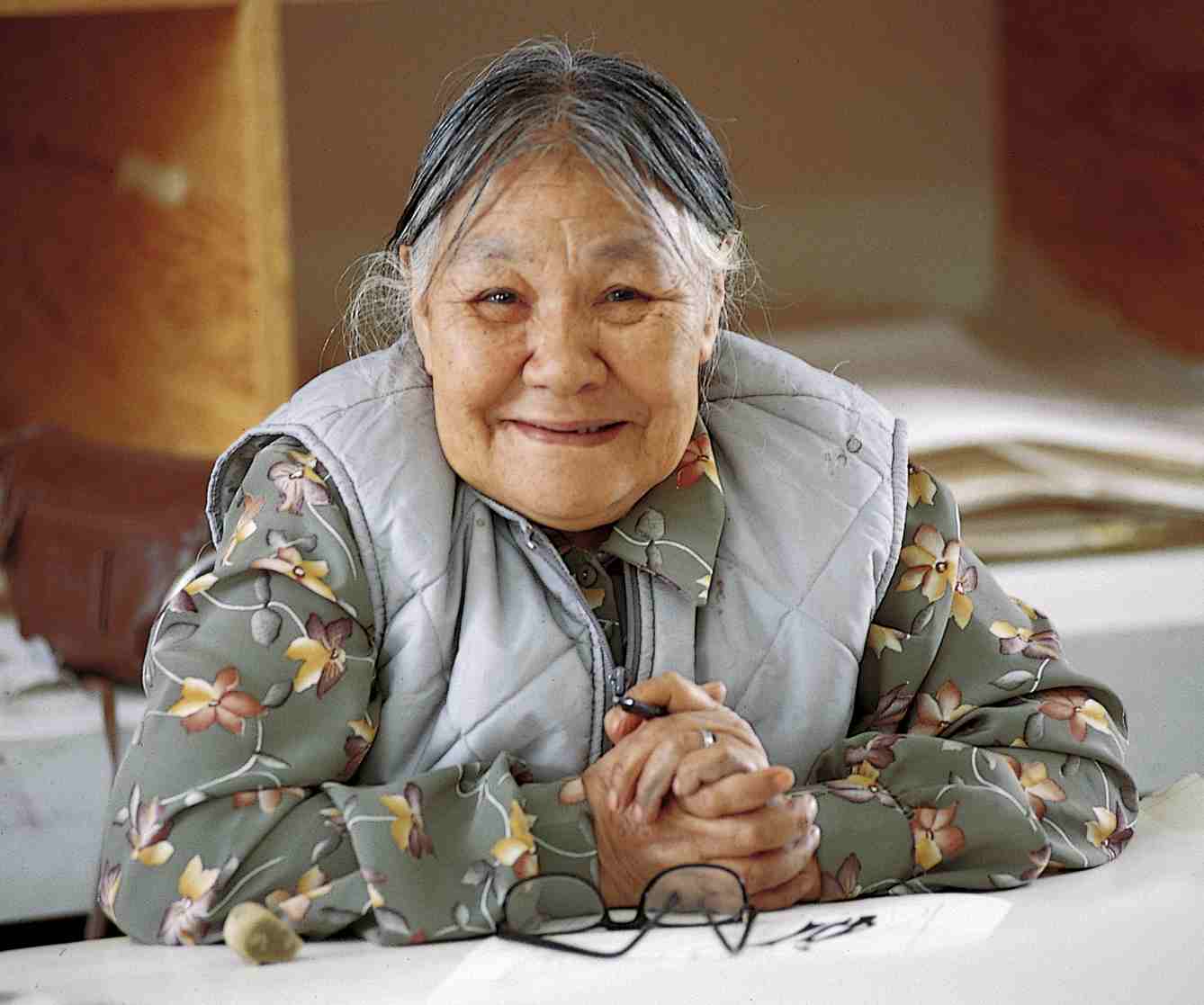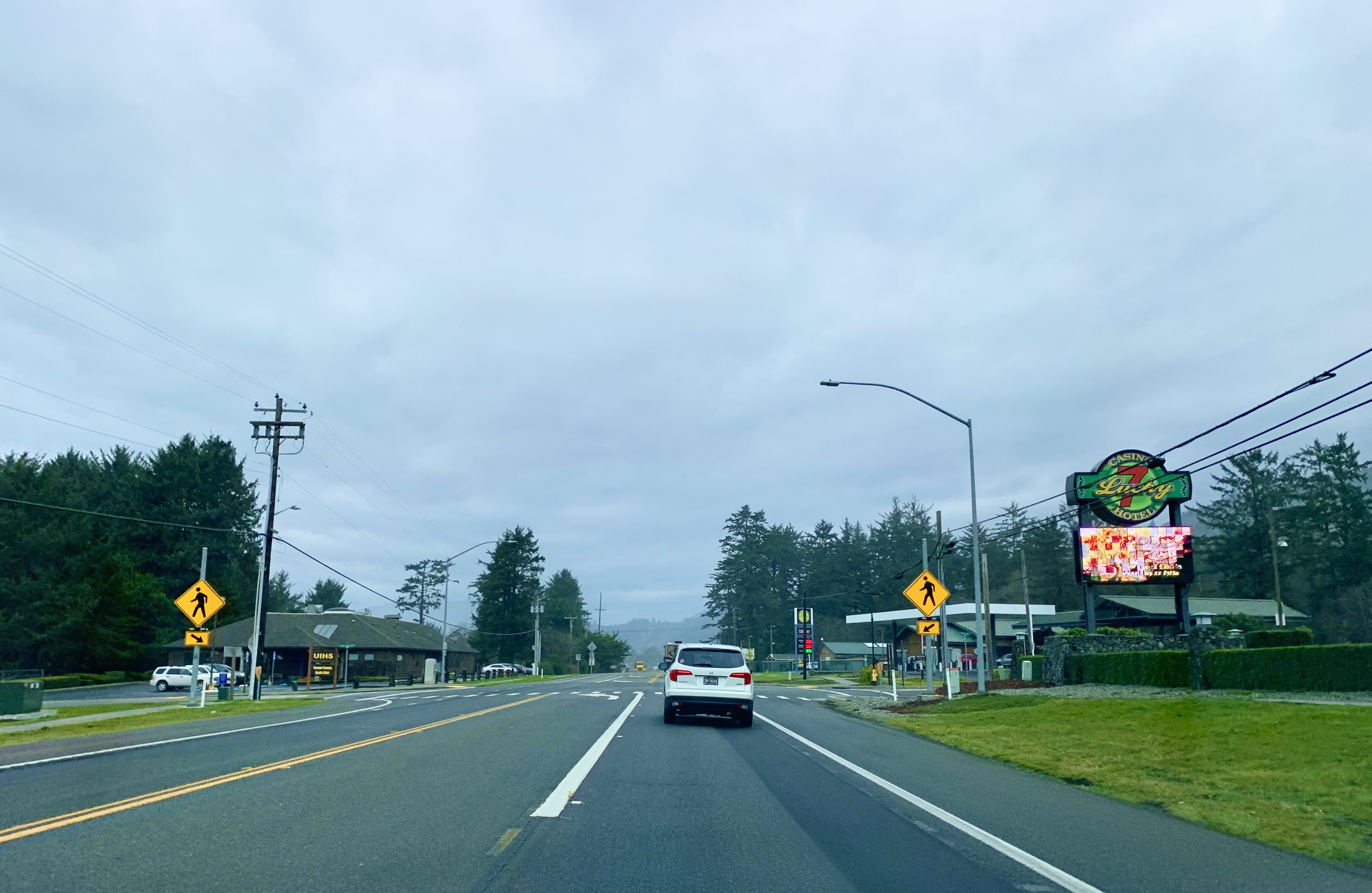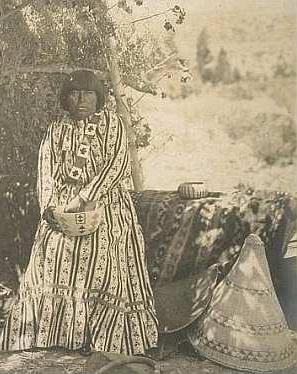|
List Of Indigenous Artists Of The Americas
This is a list of visual artists who are Indigenous peoples of the Americas, categorized by primary media. Mestizo and Métis artists whose indigenous descent is integral to their art are included, as are Siberian Yup'ik artists due to their cultural commonalities with Alaskan Yup'ik people. This list includes notable visual artists who are Inuit, Alaskan Natives, Siberian Yup'ik, American Indians, First Nations, Métis, Mestizos, and Indigenous peoples of Mexico, the Caribbean, Central America, and South America. Indigenous identity is a complex and contested issue and differs from country to country in the Americas. Inclusion to this list is based on legal membership to an Indigenous community, when applicable, or recognition by the relevant indigenous community/communities of the individual as a member of that community. Basket makers * Elsie Allen, Cloverdale Pomo, 1899–1990 * Annie Antone, Tohono O'odham * Carrie Bethel, Mono Lake Paiute, 1898–1974 * Mary Hol ... [...More Info...] [...Related Items...] OR: [Wikipedia] [Google] [Baidu] |
Kenojuak Ashevak 1 1997-05-09
Kenojuak Ashevak, (Inuktitut: ᕿᓐᓄᐊᔪᐊᖅ ᐋᓯᕙᒃ, Qinnuajuaq Aasivak), (October 3, 1927 – January 8, 2013) is celebrated as a leading figure of modern Inuit art. Early life and family Kenojuak Ashevak was born in an igloo in an Inuit camp, Ikirasaq, at the southern coast of Baffin Island. Her father, Ushuakjuk, an Inuit hunter and fur trader, and her mother, Silaqqi, named Kenojuak after Silaqqi's deceased father. According to this Inuit naming tradition, the love and respect that had been accorded to her during her lifetime would now pass on to their daughter., Native American Rhymes, Rhodes Educational Publications, 2005. Accessed 8 January 2013. Kenojuak also had a brother and a sister. Kenojuak remembered Ushuakjuk as "a kind and benevolent man." Her father, a respected ''angakkuq'' (shaman), "had more knowledge than average mortals, and he would help all the ." According to Kenojuak, her father believed he could predict weather, predict good hunting se ... [...More Info...] [...Related Items...] OR: [Wikipedia] [Google] [Baidu] |
Notability (people)
Notability is the property of being worthy of notice, having fame, or being considered to be of a high degree of interest, significance, or distinction. It also refers to the capacity to be such. Persons who are notable due to public responsibility, accomplishments, or, even, mere participation in the celebrity industry are said to have a public profile. The concept arises in the philosophy of aesthetics regarding aesthetic appraisal.Aesthetic Appraisal', Philosophy (1975), 50: 189–204, Evan Simpson There are criticisms of art galleries determining monetary valuation, or valuation so as to determine what or what not to display, being based on notability of the artist, rather than inherent quality of the art work. Notability arises in decisions on coverage questions in journalism. Marketers and newspapers may try to create notability to create celebrity, fame, or notoriety, or to increase sales, as in the yellow press. The privileged class are sometimes called notables, when ... [...More Info...] [...Related Items...] OR: [Wikipedia] [Google] [Baidu] |
Match-e-be-nash-she-wish Band Of Pottawatomi Indians Of Michigan
The Match-e-be-nash-she-wish Band of Pottawatomi Indians of Michigan is a federally recognized tribe of Potawatomi people in Michigan named for a 19th-century Ojibwe chief. They were formerly known as the Gun Lake Band of Grand River Ottawa Indians, the United Nation of Chippewa, Ottawa and Pottawatomi Indians of Michigan, Inc.,Petition for Federal Acknowledgment of Match-e-be-nash-she-wish Band of Pottawatomi Indians of Michigan William L. Church, May 16, 1994. and the Gun Lake Tribe or Gun Lake Band."Tribal Council" ''Match-e-be-nash-she-wish Band of Pottawatomi.'' (retrieved 18 Dec 200 ... [...More Info...] [...Related Items...] OR: [Wikipedia] [Google] [Baidu] |
Kelly Church
Kelly Jean Church ( Match-e-benash-she-wish Potawatomi/ Odawa/Ojibwe) is a black ash basket maker, Woodlands style painter, birchbark biter, and educator. Background Kelly Church, a fifth-generation basket maker, was born in 1967. She grew up in southwestern Michigan. Her mother is of English and Irish heritage, and her father is of Potawatomi, Odawa, and Ojibwe heritage. Church studied the Odawa language from her paternal grandmother and learned black ash basketry from her father, Bill Church, and cousin, John Pigeon. She, in turn, has taught her daughter, Cherish Parrish ( Gun Lake Band Potawatomi). Church has completed an AFA degree at the Institute of American Indian Studies and a BFA degree at the University of Michigan. Artwork Basketry Along with her family, Church harvests her own trees in swampy areas of rural Michigan. Preparing the materials takes far longer than the weaving. She removes the bark from the felled log and then splits apart the growth rings into fin ... [...More Info...] [...Related Items...] OR: [Wikipedia] [Google] [Baidu] |
Nellie Charlie
Nellie Charlie (1867–1965) was a Mono Lake Paiute - Kucadikadi basketmaker associated with Yosemite National Park. She was born in Lee Vining, California, the daughter of tribal headman Pete Jim, and his wife Patsy, also a basket maker. She married Young Charlie, a Mono Lake Paiute - Kucadikadi man from Yosemite, and they had six children. Her Paiute name was Besa-Yoona. She worked in both traditional and modern basket styles, and participated in the annual Indian Field Days competition in Yosemite in the 1920s. Her daughter, Daisy Mallory, became a prominent weaver. She was among a group of Paiute women who "became known for their exceedingly fine, visually stunning and complex polychrome baskets." Others in this group included Lucy Telles and Carrie Bethel. She died in Bishop, California. Legacy One of her baskets covered with beadwork using Czechoslovakian seed beads is in the collection of the Yosemite Museum. This and a more traditional basket she made of sedge ... [...More Info...] [...Related Items...] OR: [Wikipedia] [Google] [Baidu] |
Smith River Tolowa
The Tolowa Dee-ni' Nation, previously known as Smith River Rancheria, is a federally recognized tribe of Tolowa people in Del Norte County, California."Smith River Rancheria." ''SDSU: California Indians and Their Reservations.'' Retrieved 4 June 2012. They are people, distantly related to northern Athabascans of eastern and western , as well as the and [...More Info...] [...Related Items...] OR: [Wikipedia] [Google] [Baidu] |
Loren Bommelyn
Loren Me’-lash-ne Bommelyn (born 1956) is a tradition bearer for the Tolowa tribe. He has dedicated himself to preserving the traditional songs, language, and basketry. He is the foremost ceremonial leader of the tribe, and its most prolific basketweaver. Bommelyn is an enrolled member of the federally recognized Tolowa Dee-ni' Nation and was elected as their tribal Chairperson. Work in linguistics and education Loren Bommelyn is Tolowa, Karuk, and Wintu. His mother, Eunice Bommelyn, was a prominent tribal genealogist, Tolowa language proponent and cultural advocate. He is a fluent speaker of the Tolowa language and taught for many years at Del Norte High School in Crescent City, California.Bibby, Brian. ''The Fine Art of California Indian Basketry.'' Sacramento: Crocker Art Museum, 1996: 51-52. . He earned his master's degree in Linguistics from the University of Oregon. After years of studying with Tolowa elders, Bommelyn has published educational material about the Tolowa ... [...More Info...] [...Related Items...] OR: [Wikipedia] [Google] [Baidu] |
Navajo
The Navajo (; British English: Navaho; nv, Diné or ') are a Native American people of the Southwestern United States. With more than 399,494 enrolled tribal members , the Navajo Nation is the largest federally recognized tribe in the United States; additionally, the Navajo Nation has the largest reservation in the country. The reservation straddles the Four Corners region and covers more than 27,325 square miles (70,000 square km) of land in Arizona, Utah, and New Mexico. The Navajo Reservation is slightly larger than the state of West Virginia. The Navajo language is spoken throughout the region, and most Navajos also speak English. The states with the largest Navajo populations are Arizona (140,263) and New Mexico (108,306). More than three-fourths of the enrolled Navajo population resides in these two states. [...More Info...] [...Related Items...] OR: [Wikipedia] [Google] [Baidu] |
Mary Holiday Black
Mary Holiday Black (c. 1934 – December 13, 2022) was a Navajo basket maker and textile weaver from Halchita, Utah. During the 1970s, in response to a long-term decline in Navajo basketry, Black played a key role in the revival of Navajo basket weaving by experimenting with new designs and techniques, pioneering a new style of Navajo baskets known as "story baskets." In 1995, Black became the first Navajo artist and the first artist from Utah to receive a National Heritage Fellowship from the National Endowment for the Arts. Her baskets have been featured in collections and exhibitions throughout Utah. Early and personal life Mary Holiday was born around 1934 to Teddy and Betty Holiday in Monument Valley, Utah. She had six siblings, and as the eldest daughter she was expected to stay home and take care of the household. She never attended school. When Black was 11 years old, she learned basket weaving from a relative of her grandmother. In the 1950s, she married Jessie Bla ... [...More Info...] [...Related Items...] OR: [Wikipedia] [Google] [Baidu] |
Mono Lake Paiute
The Kucadikadi are a band of Northern Paiute people who live near Mono Lake in Mono County, California. They are the southernmost band of Northern Paiute.Fowler and Liljeblad 437Arkush, Brooke S"Historic Northern Paiute Winter Houses in Mono Basin, California."''Journal of California and Great Basin Anthropology''. 9 (2) 1987 (retrieved August 31, 2010) The Kutzadika’a have resided in the Mono Lake–Yosemite region since time immemorial.(??) Name Mono, the Indians of Owens Valley are now recognized as the southernmost division of Northern Paiute. A definitive ethnography has been published by Steward (1933; see also Steward 1938). There were probably at least thirty permanent villages clustered into a lesser number of land-owning districts between Round Valley to the north and Owens LakeThe "Mono" lived on both sides of the Sierra Nevada and are divided into two regional tribal/dialect groups, roughly based on the Sierra crest: Eastern Mono live on the California-Nevada border ... [...More Info...] [...Related Items...] OR: [Wikipedia] [Google] [Baidu] |
Carrie Bethel
Carrie McGowan Bethel (18981974) was a Mono Lake Paiute – Kucadikadi (Northern Paiute) basketmaker associated with Yosemite National Park. She was born Carrie McGowan in Lee Vining, California, and began making baskets at age twelve. She participated in basket-making competitions in the Yosemite Indian Field Days in 1926 and 1929. She gave basket weaving demonstrations at the 1939 Golden Gate International Exposition. Bethel was one of a group of Mono-Paiute women who "became known for their exceedingly fine, visually stunning and complex polychrome baskets." Other basket weaving artists in this group included Nellie Charlie and Lucy Telles. Bethel died in Lee Vining, in 1974. Legacy In 2006, one of her baskets sold at auction for $216,250. This basket had won first prize in the 1926 Yosemite Field Days basket competition. Four of her baskets were part of an exhibition on the art of Yosemite which appeared at the Autry National Center, the Oakland Museum o ... [...More Info...] [...Related Items...] OR: [Wikipedia] [Google] [Baidu] |

.jpg)


